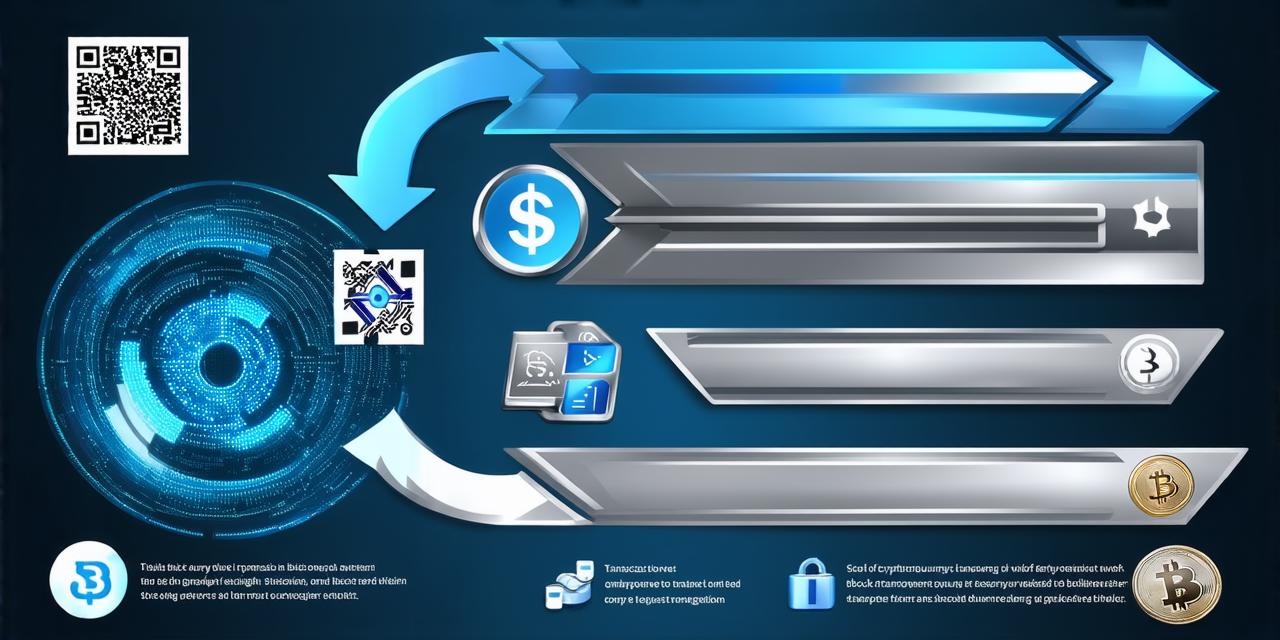<p>Blockchain technology is revolutionizing industries across the board, from finance and banking to healthcare and supply chain management. One of the key features of blockchain is its ability to facilitate secure, transparent, and immutable transactions. However, monitoring and managing these transactions can be a challenging task for developers, especially when dealing with large volumes of data. In this article, we will explore how to check transactions in blockchain using various tools and techniques, including block explorers, APIs, and smart contracts.</p>
<h2> What is Blockchain?</h2>
<p>Before diving into the specifics of checking transactions in blockchain, it's important to have a basic understanding of what blockchain is and how it works. At its core, blockchain is a distributed ledger that enables secure and transparent recording of transactions between two parties without the need for intermediaries such as banks or other financial institutions. Each transaction is verified by a network of computers and added to a chain of blocks, which makes it tamper-proof and resistant to fraud.</p>
<p>There are many different types of blockchain platforms available, each with its own unique features and capabilities. Some popular examples include Bitcoin, Ethereum, Hyperledger Fabric, and Corda. Each platform has its own set of programming languages, tools, and APIs that developers can use to build decentralized applications (dApps) and smart contracts.</p>
<h2> How to Check Transactions in Blockchain using Block Explorers</h2>
<p>One of the simplest ways to check transactions in blockchain is by using a block explorer. A block explorer is a website or tool that allows users to view and search for transactions on a specific blockchain network. By entering a transaction hash or address, users can see detailed information about the transaction, including the sender and receiver addresses, the amount of cryptocurrency transferred, and the timestamp of the transaction.</p>
<p>Some popular block explorers include Blockchair, Blockstream.info, and Ethplorer. Each of these tools provides different levels of functionality and customization, so it's important to choose one that meets your specific needs. For example, if you're working with a private blockchain network, you may need to use a more specialized tool that allows for authentication and authorization.</p>
<h2> How to Check Transactions in Blockchain using APIs</h2>
<p>Another way to check transactions in blockchain is by using APIs (Application Programming Interfaces). APIs are essentially software interfaces that enable communication between different systems and applications. In the context of blockchain, APIs allow developers to access data and functionality provided by a blockchain network programmatically.</p>
<p>There are many different types of APIs available for blockchain networks, including read-only APIs, write APIs, and authentication APIs. Read-only APIs allow developers to query data from the blockchain, while write APIs enable them to submit new transactions or modify existing ones. Authentication APIs are used to verify the identity of users and ensure that they have permission to access specific data or functionality.</p>
<p>Some popular blockchain API providers include Infura, Altoros, and Chainstack. These platforms offer a range of tools and libraries that make it easy for developers to integrate blockchain functionality into their applications, without having to build everything from scratch.</p>
<h2> How to Check Transactions in Blockchain using Smart Contracts</h2>
<p>Smart contracts are self-executing programs that run on the blockchain and enable the automation of complex business processes. They can be used to facilitate transactions between two parties, enforce rules and regulations, and even manage supply chains or logistics. To check transactions in blockchain using smart contracts, developers need to understand how these programs work and how they interact with the blockchain.</p>
<p>Developers can use various tools and platforms to create, deploy, and manage smart contracts on the blockchain. Some popular options include Truffle, Remix, and Gan. These tools provide a range of features and functionality that make it easy for developers to build, test, and debug smart contracts.</p>
<h2> Case Studies: Real-World Examples of Checking Transactions in Blockchain</h2>
<p>Now that we've covered the basics of how to check transactions in blockchain using various tools and techniques, let's look at some real-world examples of how these technologies are being used in practice.</p>
<h2> Supply Chain Management</h2>
<p>One of the most promising applications of blockchain technology is in supply chain management. Blockchain can be used to create a tamper-proof record of every transaction that takes place along the supply chain, from raw materials extraction to final product delivery. This enables companies to track products more efficiently, reduce fraud and waste, and improve customer satisfaction.</p>
<p>For example, Walmart has been using blockchain technology to track the origin and movement of food products in its supply chain. By using a blockchain-based system, Walmart can quickly identify the source of any contamination or spoilage issues, and take action to prevent them from spreading. This has helped the company reduce food waste by up to 50%, and improve customer trust in its products.</p>
<h2> Voting Systems</h2>
<p>Another area where blockchain technology is making a big impact is in voting systems. Blockchain can be used to create secure, transparent, and immutable voting systems that enable people to cast their votes confidently and without fear of tampering or manipulation.</p>
<p>One example of a blockchain-based voting system is Voatz, which was used in the 2018 mid-term elections in West Virginia. Voatz uses a combination of blockchain and biometric authentication technologies to enable secure and verifiable voting. The system also includes features such as real-time vote counting and auditing, which can help to increase transparency and reduce fraud.</p>
<h2> Digital Identity Verification</h2>
<p>Digital identity verification is another area where blockchain technology is making a big impact. Blockchain can be used to create secure and decentralized identity systems that enable people to control their own personal data, and share it with others on a need-to-know basis.</p>
<p>One example of a blockchain-based identity verification system is uPort, which was developed by the Swiss government. uPort uses a combination of blockchain and biometric authentication technologies to enable secure and verifiable identity verification. The system also includes features such as self-sovereignty over personal data, and the ability to share data with others on a need-to-know basis.</p>
<h3> FAQs: Answering Common Questions about Checking Transactions in Blockchain</h3>
<p>Now that we've covered some real-world examples of how to check transactions in blockchain, let's answer some common questions that developers may have when working with these technologies.</p>
<h3> Q: How do I access the blockchain network?</h3>
<p>To access a blockchain network, you need to have a cryptographic wallet that is compatible with the platform you want to work with. For example, if you want to work with the Ethereum blockchain, you'll need an Ethereum wallet such as MetaMask or MyEtherWallet. Once you have a wallet, you can use it to interact with the blockchain by sending and receiving transactions, as well as deploying smart contracts.</p>
<h3> Q: How do I authenticate users on the blockchain?</h3>
There are many different ways to authenticate users on the blockchain, depending on the specific use case and platform. Some common methods include using public-private key pairs, biometric authentication, or multi-factor authentication.
<h3> Q: How do I store data on the blockchain?</h3>
<p>Data can be stored on the blockchain in various ways, depending on the specific use case and platform. Some common methods include using smart contracts to store and manage data, or using decentralized storage solutions such as IPFS (InterPlanetary File System) or Swarm.</p>
<h3> Q: How do I ensure the security of my blockchain application?</h3>
<p>Ensuring the security of a blockchain application requires careful consideration of various factors, including the choice of platform, smart contract design, authentication methods, and data storage solutions. It's also important to stay up-to-date with the latest security best practices and vulnerability disclosures.</p>
<h3> Conclusion: Checking Transactions in Blockchain is Essential for Building Secure and Efficient Applications</h3>
<p>In conclusion, checking transactions in blockchain is essential for building secure and efficient applications that can automate complex business processes and enable real-time data sharing. Whether you're working with read-only APIs, write APIs, or smart contracts